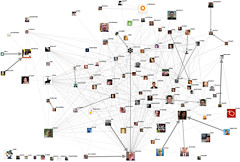Hardly any organisation can get by nowadays without a presence in social channels, but many still feel uncomfortable about how to do it. Luckily, most have realised that it’s not just like pushing your marketing messages onto some audience, as in traditional marketing (but some still do, unfortunately). So what’s the big difference? And what are the consequences?
Social media marketing works like a rock band
- Traditional marketing speaks to non-customers, trying to turn them into new customers
- Marketing in social media speaks to existing customers, caring and enthusing them, leaving to them to recruit new customers – like a rock band tending to their fans
But how’s that relevant for subcontracting your social media communications or not?
Putting it very simply, when the fans reach out, who do they want to reach? The promotor or the members of the band? Your professional tweeters/facebookers or your genuine experts? The hard currency in social media is trust. Go-betweens like band promotors or social media subcontractors don’t have the same credibility, expertise or authenticity as the members of a band or your own staff. When it will show through, not if, it risks eroding trust in your brand rather than the opposite.
You may well use social media subcontractors, but not as spokespersons
Instead, there are two very useful areas where you can leverage social media specialists:
Train your experts to communicate in social networks
Instead of speaking on behalf of your experts, have social media specialists train those experts to speak for themselves. Writing skills, tools and practices, do’s and don’ts. Plus some coaching on demand. Much better bang for your buck. Helps your experts gather market intelligence and do some brand building for your company and themselves too.
Get help scanning the buzz, identifying influencers and interesting content or discussions
The online networks are so vast and fast moving that it might be too much for your experts to both improve their communication skills and keep tabs on the networks. If so, you could hire someone with good tools and methods to scan and apply analytics to identify who to reach out to and build relations with – maybe also how best to succeed in doing it – and to identify relevant hotspots of content or discussions, passing the tips on to your experts to action, explore and respond to.
What’s your experience of social media go-betweens, training of spokespersons and social media analytics and scanning?
Photo: Pendulum 2007 by www.flickr.com/photos/wonker






You must be logged in to post a comment.